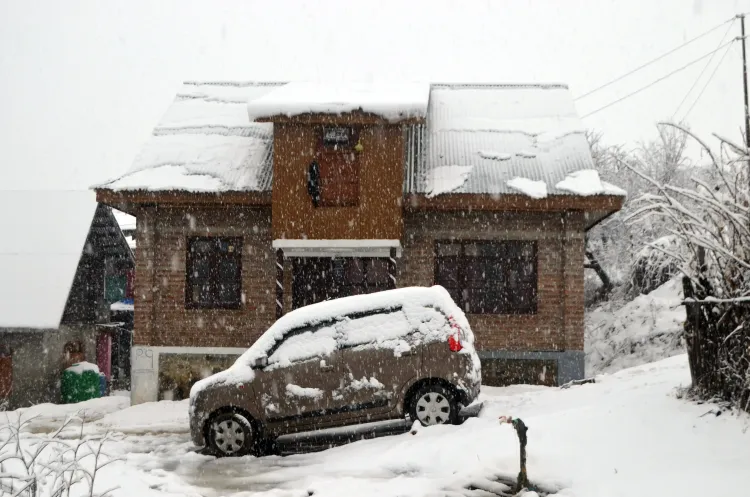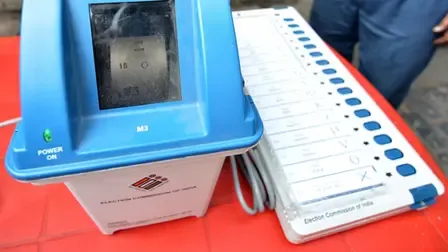Heavy Rainfall and Snowfall Alleviate Drought Concerns in J&K

Synopsis
Key Takeaways
- Moderate rain and snowfall concluded a 50-day dry spell.
- Predictions indicate more precipitation in the coming hours.
- Jammu and Kashmir's rainfall deficit reduced significantly.
- Water resources have been replenished, easing drought fears.
- Spring water flow has resumed in various locations.
Srinagar, Feb 28 (NationPress) Moderate rain and snowfall have been recorded in Jammu and Kashmir over the past 24 hours, effectively concluding the dry spell that lasted more than 50 days.
The Meteorological (MeT) department has predicted additional precipitation within the next 24 hours on Friday.
Srinagar experienced 3.4 cm of snowfall, while Gulmarg received 60 cm and Pahalgam saw 23 cm. In Jammu city, rainfall measured 77.4 mm, Banihal 100.4 mm, Batote 163.7 mm, Katra 118.6 mm, and Bhaderwah 72 mm as of this morning.
The minimum temperature in Srinagar was recorded at zero degrees Celsius, in Gulmarg at minus 2 degrees, and in Pahalgam at minus 0.4 degrees.
Jammu city’s minimum temperature was 11.2 degrees Celsius, Katra 8.8 degrees, while both Batote and Banihal were at zero degrees, and Bhaderwah at minus 0.2 degrees.
From January until February 26, Jammu and Kashmir witnessed an 83 percent rainfall deficit. However, the recent heavy precipitation over the last two days has reduced the overall deficit for January and February to 65 percent.
All water resources in Kashmir, including rivers, streams, springs, lakes, and other water bodies, rely on the perennial water reservoirs in higher elevations that are replenished annually by substantial winter snowfall.
A lack of adequate snowfall this winter, combined with an extended dry period, had raised concerns about drought in the union territory. The recent rain and snow have significantly alleviated these concerns among residents.
The 40-day period of extreme winter cold known as 'Chillai Kalan', which lasted from December 21 to January 30, only saw one major snowfall on December 28 of the previous year.
A dry Chillai Kalan followed by a prolonged dry spell in January and February had caused distress among farmers, fruit growers, and the general populace in the Valley. The dry conditions had caused some springs, including the historic Achabal spring in Anantnag district, to dry up. Fortunately, these springs are now revitalized with flowing water.










